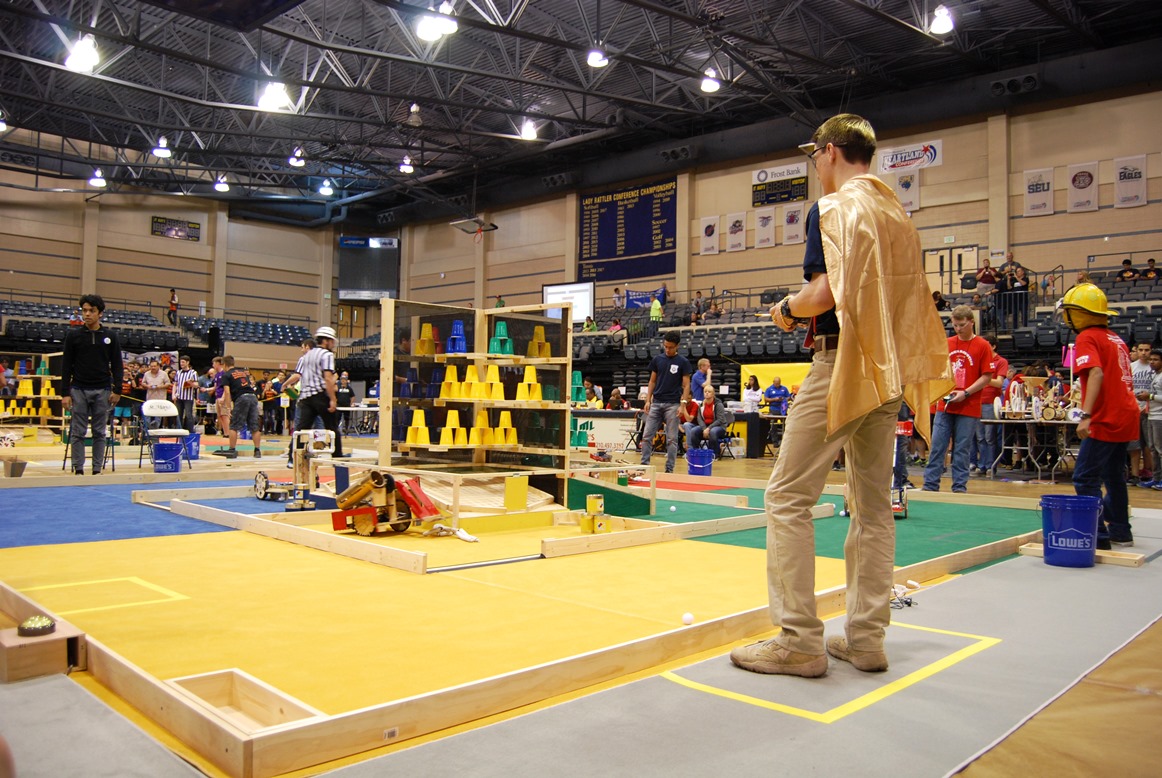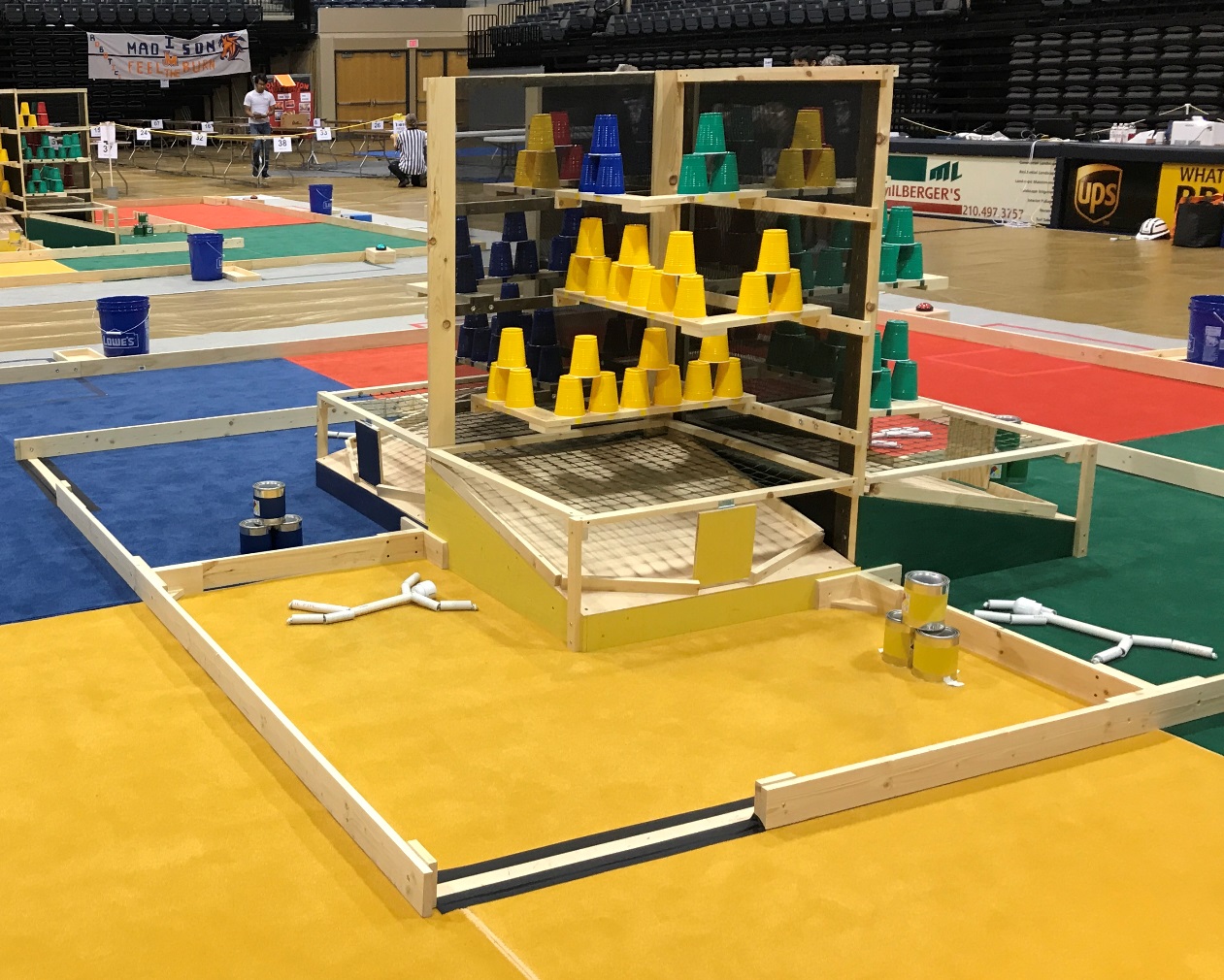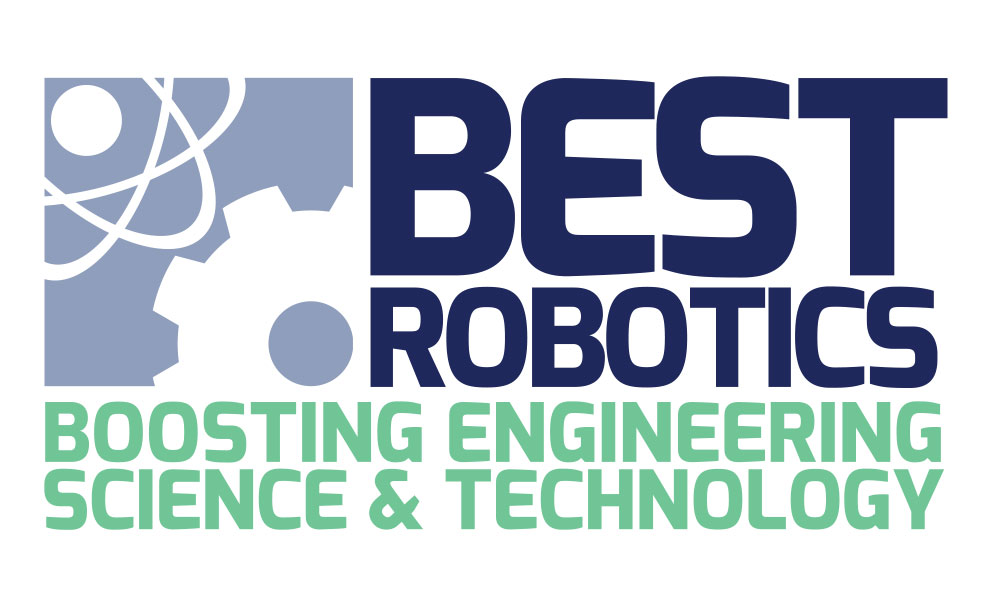Crossfire
(Courtesy of SA BEST)
Teams are tasked with rescuing the “manikin,” containing the chemical drums, and extinguishing the flames. The manikin (a PVC and rope assembly) is considered rescued when the spotter has properly placed the manikin in the stretcher located outside the field. The chemical drums (quart paint cans having various weights) are contained by having the robot place them into the containment area inside the playing field. The flames (upside down plastic cups) are considered extinguished when water (plastic golf ball) has been used to knock over the cup or to displace the cup from the shelf location.

The playing field consists of three zones that allow varying levels of robot access. The no-entry zone in the center of the field includes the structure where the flames are located. Robots may not enter the no-entry zone other than to push open the water return door. The hot-zone surrounds the no-entry zone and is delineated by a border wall with a doorway opening. A robot may only enter the hot-zone assigned to their team and must enter through the doorway. The hot-zone is where the team’s manikin and chemical drums are located. The manikin and chemical drums must be transported through the doorway to leave the hot-zone. The cold-zone surrounds the hot-zone and can be occupied by any team. The robot motion within the cold-zone is not limited, other than a robot may not enter the starting box of another team.

Each team starts with 40 plastic golf balls that represent water. The water is contained in a hydrant (bucket). The spotter can handle the hydrant and/or the water to load it into the robot, but only after that match starts and only when the robot is docked in the robot starting box. The spotter may not throw the water or directly launch it at the flames. The robot can recover and recycle water from the ground or from the collection area in the hot zone. Water in the robot starting box can be handled by the spotter if the robot is docked. A robot is considered docked when the robot is in contact only with the starting box and the driver is not controlling the robot.
The spotter is responsible for properly placing the manikin in the stretcher after the robot has delivered the manikin to the robot starting box. To score, the manikin must be placed in the stretcher so that all limbs are inside the stretcher, in contact with the base of the stretcher, and oriented away from the head. The stretcher may not be moved. Bonus points can be scored by pressing the rescue timer button after the manikin is properly placed in the stretcher.
A summary of the point values for the various items is provided in the table that follows.
Item |
Description |
No. Per |
Point |
Start Location |
Score Location |
Manikin |
PVC |
1 |
120 |
Team’s |
Stretcher |
Flame* |
Plastic Cup |
30 |
5 |
Center Structure |
Knocked Over |
Chemical Drum |
Quart Can |
3 |
40 |
Team’s |
Containment Area |
* Some flames are located in adjacent quadrants.
Two additional bonus scoring opportunities exist:
- A team will receive one point per second left in the match at the time the rescue timer button is pushed after scoring the manikin. If the manikin is not properly placed when the button is pushed, the team receives no bonus.
- A team will receive 30 points if all of that team’s flames are extinguished.
Spotters may reconfigure the robot when it is docked in the starting area after the match has started. Reconfiguring the robot includes replacing components with optional components, or repositioning parts of the robot. Electrical modifications of the robot are not allowed during a match.
There are many additional rules governing the actions of the drivers and spotters, but a few important restrictions are as follows. During a match, drivers/spotters may not:
- Leave their respective areas.
- Touch the field, robot, and game pieces, except as discussed previously.
- Throw anything (including the golf balls).
Teams have constructed their machines subject to a list of allowable materials and other rules on construction, as well as initial size and weight limits.
There are numerous restrictions on how the game is played. A partial list of restrictions includes:
- Robots may not block another robot.
- Robots may not remove (steal) game pieces that are under the control of another robot, or that have already been placed in a scoring receptacle.
- Teams may not do anything that the referees consider to have malicious intent.

 Announcements
Announcements










